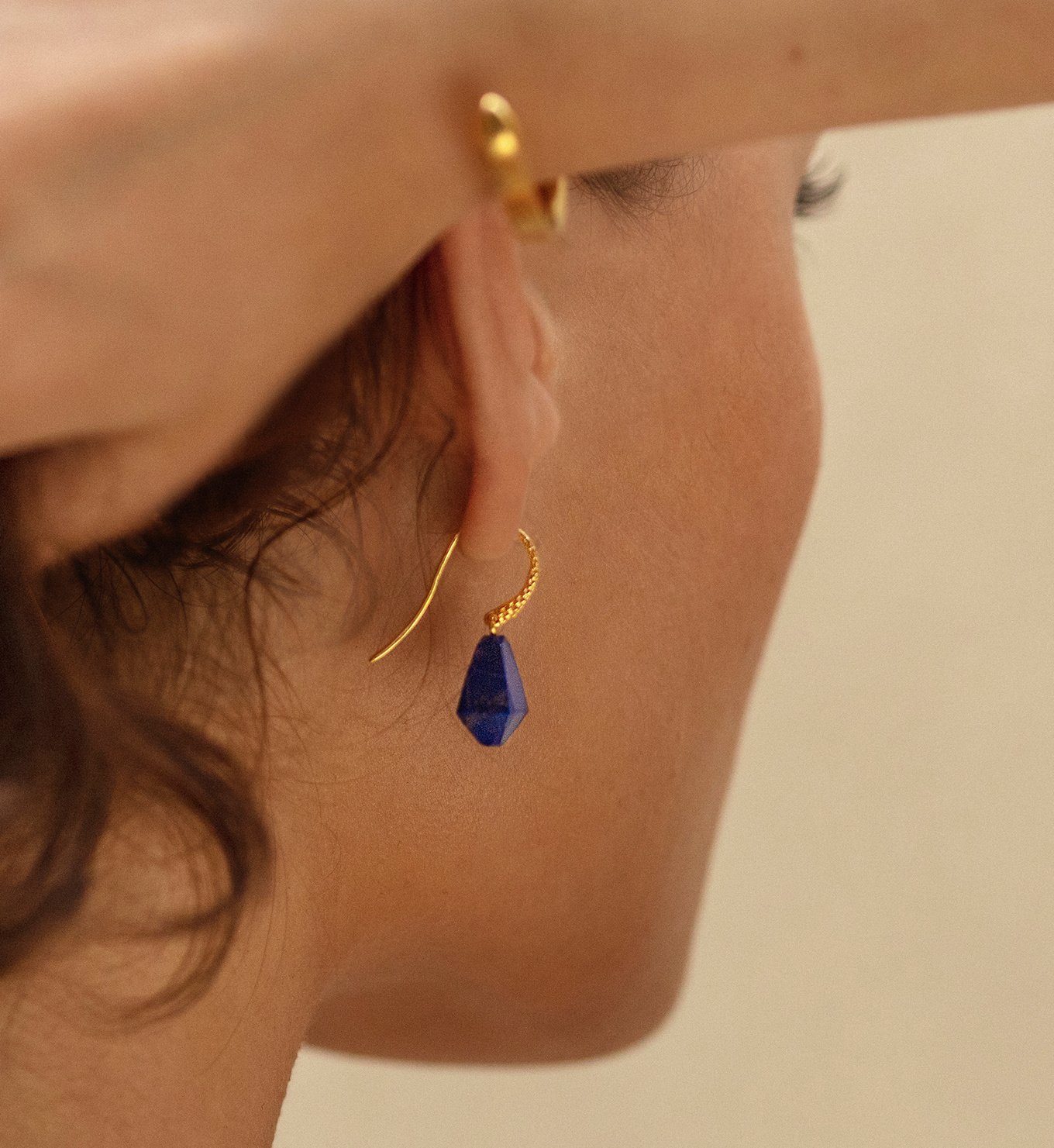Royal Blue
Photo credit: @monicavinader
Lapis lazuli’s deep appeal
Lapis lazuli, which means “blue stone,” is revered for its exquisite color. Sourced in the mountains of Afghanistan as well as Chile, Angola, Canada, the US, and Pakistan, lapis is composed of several minerals, including lazurite, which provides the royal-blue hue, and pyrite, which gives the stone its pale-gold flecks.
Lapis goes back thousands of years. Inanna, the Sumerian goddess of love, wore a lapis necklace in a myth that originated around 4000 BCE. Ancient Mesopotamian rulers were buried with carved lapis objects, their temples decorated with lapis ornamentations. Ancient Romans believed the stone was a powerful aphrodisiac, and ancient Egyptians used it for cosmetics and amulets. Lapis was introduced to Europe during the Crusades, and in the Renaissance artists ground it into ultramarine pigment used to paint vibrant skies and seas.
The stone’s allure may be tied to more than its gorgeous color. Many believe lapis has a direct connection with the divine, the power to ward off the evil eye, and the ability to attract prosperity. Worn on your finger, or dangling from the wrist or neck, its deep-blue magnetism is undeniable.








Editor: Samantha Durbin
Wordsmith: Maryann LoRusso
Every item featured is personally selected by our writers and editors (read: we're totally into it). Please know that when you buy through our links, we may earn an affiliate commission (read: we get to keep doing what we love).


